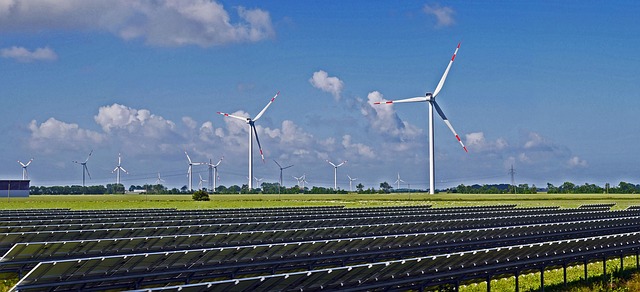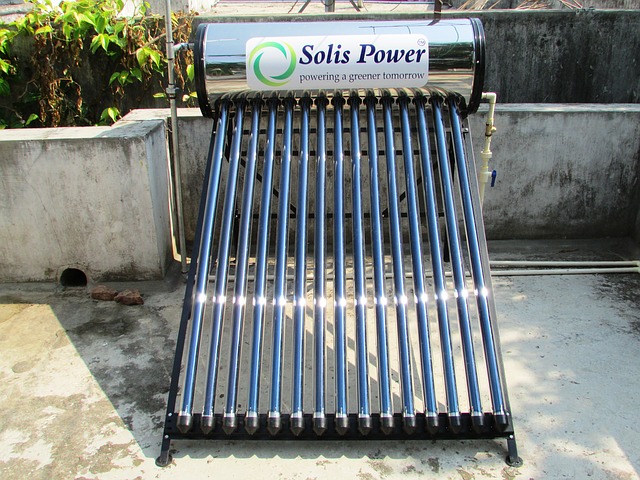Solar energy is a clean, renewable power source that is becoming increasingly popular for homes and businesses looking to reduce their carbon footprint and save on energy costs. With advances in solar technology, it’s now easier and more affordable than ever to harness the power of the sun. However, to truly maximize the benefits of solar energy, there are several important factors to consider.
Understanding Solar Power Basics
Before diving into specific tips, it’s crucial to have a solid understanding of how solar power works. Solar panels, also known as photovoltaic (PV) panels, convert sunlight into electricity. When sunlight hits the panels, it excites electrons in the solar cells, generating direct current (DC) electricity. This DC electricity is then converted to alternating current (AC) electricity by an inverter, making it usable for powering your home or business.
The amount of electricity your solar system generates depends on several factors, including:
- The number and size of solar panels
- The efficiency of the solar cells
- The amount of sunlight exposure
- The angle and orientation of the panels
To determine how many panels you need, start by assessing your energy usage. Look at your past utility bills to get an idea of your average monthly electricity consumption. You can then work with a solar installer to design a system that meets your needs.
It’s also important to note that there are two main types of solar panels: monocrystalline and polycrystalline. Monocrystalline panels are made from a single crystal of silicon and tend to be more efficient, but also more expensive. Polycrystalline panels are made from multiple silicon crystals and are less efficient but more affordable. The best option for you will depend on your budget, available space, and energy goals.
Maximizing Your Solar System’s Output
Once you have a solar system installed, there are several ways to ensure it’s operating at peak performance:
1. Ensure Proper Installation and Orientation
Proper installation is key to getting the most out of your solar panels. They should be installed in an area with maximum sun exposure, free from shade caused by trees, buildings, or other obstructions. In the northern hemisphere, solar panels should typically face south to capture the most sunlight throughout the day.
The angle of your panels is also important. The optimal angle depends on your latitude and can be adjusted seasonally to account for changes in the sun’s position. Most fixed-mount systems are set at an angle equal to the location’s latitude to capture the most sunlight year-round.
2. Keep Your Panels Clean
Dirt, dust, pollen, bird droppings, and other debris can accumulate on your solar panels over time, reducing their efficiency. Regularly cleaning your panels can help maintain optimal electricity production.
Most panels can be cleaned with just water and a soft brush or sponge. Avoid using abrasive materials or harsh chemicals that could damage the panels. If your panels are hard to access or you’re uncomfortable cleaning them yourself, consider hiring a professional cleaning service.
3. Monitor Your System’s Performance
Keeping an eye on your solar system’s output can help you identify any issues early on. Most modern inverters have built-in monitoring systems that track your system’s performance and can alert you to any drops in efficiency.
Pay attention to the inverter’s indicator lights:
- A green light typically means the system is functioning properly
- A flashing or red light could indicate an issue that needs to be addressed
If you notice any problems, contact your solar installer or a qualified technician for troubleshooting.
4. Conduct Regular Maintenance
In addition to cleaning, your solar system should be inspected periodically to ensure all components are in good working order. This includes checking the mounting hardware, electrical connections, and inverter.
Schedule a professional inspection at least once a year, or more frequently if recommended by your installer. Many solar companies offer maintenance packages or extended warranties that cover regular checkups and repairs.
Taking Advantage of Financial Incentives
Going solar can come with a significant upfront cost, but there are various financial incentives available to make it more affordable:
1. Federal Solar Tax Credit
The federal government offers a solar investment tax credit (ITC) that allows you to deduct a percentage of your solar installation costs from your federal taxes. As of 2021, the ITC is set at 26% and is scheduled to decrease to 22% in 2023 before expiring in 2024 for residential systems (unless extended by Congress).
2. State and Local Incentives
Many states, counties, and municipalities offer additional incentives for going solar, such as:
- Rebates
- Grants
- Property tax exemptions
- Sales tax exemptions
- Performance-based incentives (PBIs) that pay you for the electricity your system generates
Check with your local government or solar installer to see what incentives are available in your area.
3. Net Metering
Net metering is a billing arrangement that allows you to send excess electricity generated by your solar panels back to the grid in exchange for credits on your utility bill. These credits can then be used to offset your electricity costs during times when your solar system isn’t producing enough power, such as at night or on cloudy days.
Net metering policies vary by state and utility company, so be sure to research the specifics in your area. Some states have more favorable net metering rules than others, which can impact your solar savings over time.
Choosing the Right Solar Installer
Selecting a reputable and experienced solar installer is crucial for ensuring your system is designed and installed properly. Here are some tips for choosing the right company:
1. Get Multiple Quotes
Reach out to several solar installers in your area to get quotes for your project. Compare not only the prices but also the quality of the components, warranties, and customer service.
Don’t automatically go with the cheapest option – remember, you get what you pay for. A higher-quality system may cost more upfront but can provide better performance and reliability over time.
2. Check for Licensing and Certification
Make sure any solar installer you’re considering is licensed and insured in your state. You can usually check with your state’s licensing board or contractor association to verify a company’s credentials.
Additionally, look for installers with certification from the North American Board of Certified Energy Practitioners (NABCEP). NABCEP is a highly respected certification organization in the solar industry, and their seal of approval can give you added peace of mind.
3. Read Reviews and Ask for References
Research solar companies online to see what past customers have to say about their experience. Check reviews on sites like Yelp, Google, and the Better Business Bureau.
You can also ask installers for references from previous clients. A reputable company should be happy to provide you with contact information for satisfied customers who can speak to the quality of their work.
Incorporating Solar into Your Home or Business
Solar energy isn’t just limited to rooftop panels – there are many ways to incorporate solar into your home or business:
1. Solar Water Heating
Solar water heaters use the sun’s energy to heat water for your home or business, reducing your reliance on traditional water heating methods like gas or electricity. There are two main types of solar water heaters:
- Active systems, which use pumps to circulate water through the collectors
- Passive systems, which rely on natural convection to move water
Solar water heaters can be a cost-effective way to reduce your energy bills, especially if you have high hot water usage.
2. Solar Lighting
Solar-powered lights are a simple and affordable way to harness the sun’s energy. They’re ideal for outdoor spaces like gardens, pathways, and parking lots.
Solar lights work by using a small solar panel to charge a battery during the day. At night, the battery powers an LED light. They’re easy to install and require no wiring or electricity, making them a convenient option for adding light to your property.
3. Solar Heating and Cooling
Solar energy can also be used to heat and cool your home or business through solar thermal systems. These systems collect heat from the sun and use it to warm air or water, which is then circulated through your building.
In the summer, the process can be reversed to provide cooling. Solar thermal systems can be used in conjunction with traditional HVAC systems to reduce energy costs and improve comfort.
The Future of Solar Energy
As solar technology continues to advance, the future of solar energy looks bright. Here are some exciting developments on the horizon:
1. Solar Shingles
Solar shingles, also known as building-integrated photovoltaics (BIPV), are a relatively new product that combines the functionality of solar panels with the aesthetics of traditional roofing materials. They’re designed to look like regular asphalt shingles while still producing electricity.
Solar shingles offer a more streamlined and attractive alternative to bulky rooftop panels, making solar a more appealing option for homeowners concerned about curb appeal.
2. Energy Storage
One of the biggest challenges with solar energy is that it’s intermittent – solar panels only produce power when the sun is shining. However, advances in energy storage technology are making it possible to store excess solar energy for use later on.
Battery systems like the Tesla Powerwall allow you to store electricity generated by your solar panels during the day and use it at night or during power outages. As battery technology improves and costs come down, energy storage is likely to become an increasingly important part of solar installations.
3. Community Solar
Community solar projects, also known as solar gardens or shared solar, allow multiple customers to benefit from a single solar installation. Participants can either purchase or lease a portion of the solar panels and receive credits on their electricity bills for the power produced.
Community solar makes it possible for renters, apartment dwellers, and homeowners without suitable roofs to still take advantage of solar energy. It’s an innovative model that’s gaining traction across the country as more states adopt enabling legislation.
Conclusion
Solar energy offers a clean, renewable, and increasingly affordable way to power your home or business. By understanding the basics of solar power, maximizing your system’s output, taking advantage of financial incentives, choosing the right installer, and staying up-to-date on the latest technology trends, you can make the most of this abundant energy source.
Whether you opt for rooftop panels, solar water heating, solar lighting, or other solar applications, you’ll be taking an important step towards reducing your carbon footprint and saving money on your energy bills. As solar continues to grow and evolve, it’s an exciting time to be a part of the clean energy revolution.




